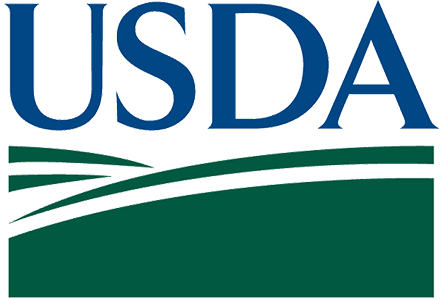Community Survey
November, 2020

Survey was launched in November 2020 with 535 participants. Responses shown are only for those respondents who answered the questions (numbers of responses may vary between questions)
The Agricultural Genome to Phenome Initiative (AG2PI) has gathered a list of genomic, phenomic, and data resources that are available to be shared with the G2P commnity. Below is the list of available resources and links to request forms that will grant you access to a list of potential contacts who are willing to share their resources. In accessing these contacts, you are agreeing to AG2PI's Code of Conduct and understand that access to the resources is not guaranteed, but will be negotiated between yourself and the contact.
How familiar are you with research efforts to improve the genetics of crops and/or livestock?
| Answers | Count | |||
|---|---|---|---|---|
| 1 | Not familiar | 14 ( 3.0%) |
|
|
| 2 | Somewhat familiar | 141 (30.2%) |
|
|
| 3 | Very Familiar | 312 (66.8%) |
|
|
| 467 |
The main goal of genome to phenome (G2P) research is to identify genome variation associated with phenotype variation, and to use these data to predict and improve future traits in crops and livestock. How familiar are you with this type of research?
| Answers | Count | |||
|---|---|---|---|---|
| 1 | This is the first time I have heard of it | 44 ( 9.4%) |
|
|
| 2 | I have listened to discussions on G2P | 103 (22.1%) |
|
|
| 3 | I have colleagues conducting G2P research | 114 (24.4%) |
|
|
| 4 | I participate in G2P research | 206 (44.1%) |
|
|
| 467 |
Without respect to your ability to participate, how important do you believe each of the following activities are for advancing G2P research? Please rate activities from not critical to very critical.
| Answers | Not critical | Critical | Very critical | Total | |
|---|---|---|---|---|---|
| 1 | Share information about AG2P science - learnings, tools, and methods | 8 ( 2.2%) | 152 (42.3%) | 199 (55.4%) | 359 |
| 2 | Plan integration of agriculture and technology for improving crop and livestock products | 27 ( 7.5%) | 160 (44.7%) | 171 (47.8%) | 358 |
| 3 | Bring together potential collaborators from complementary disciplines in crop and livestock science | 24 ( 6.7%) | 149 (41.6%) | 185 (51.7%) | 358 |
| 4 | Strengthen coordination across existing research teams/projects (e.g., Genomes to Fields, Functional Annotation of Animal Genomes, etc.) | 23 ( 6.4%) | 149 (41.7%) | 185 (51.8%) | 357 |
| 5 | Nurture international coordination of genome to phenome networks | 39 (11.0%) | 169 (47.5%) | 148 (41.6%) | 356 |
| 6 | Coordinate sharing of genotyping and phenotyping resources across institutions | 11 ( 3.1%) | 145 (40.5%) | 202 (56.4%) | 358 |
| 7 | Encourage development of tools for the G2P frontier; i.e., organism-level modeling, handling GxE and GxExM interactions | 21 ( 5.9%) | 162 (45.4%) | 174 (48.7%) | 357 |
| 8 | Advocate AG2P research needs to funding agencies in the U.S. and internationally | 23 ( 6.5%) | 112 (31.5%) | 221 (62.1%) | 356 |
What scientific discipline do you represent?
| Answers | Count | |||
|---|---|---|---|---|
| 1 | Agriculture, General | 77 (10.2%) |
|
|
| 2 | Animal Science | 114 (15.1%) |
|
|
| 3 | Biological Science | 86 (11.4%) |
|
|
| 4 | Computer Science | 16 ( 2.1%) |
|
|
| 5 | Data Sciences (including applied mathematics, bioinformatics, statistics) | 79 (10.4%) |
|
|
| 6 | Crop/Plant Science | 99 (13.1%) |
|
|
| 7 | Economics | 5 ( 0.7%) |
|
|
| 8 | Engineering | 14 ( 1.8%) |
|
|
| 9 | Genetics/Genomics/Plant Breeding | 106 (14.0%) |
|
|
| 10 | Genetics/Genomics/Animal Breeding | 116 (15.3%) |
|
|
| 11 | Physical Science | 7 ( 0.9%) |
|
|
| 12 | Social science | 4 ( 0.5%) |
|
|
| 13 | Other | 34 ( 4.5%) |
|
|
| 757 |
Where do you live?
| Answers | Count | |||
|---|---|---|---|---|
| 1 | United States | 234 (68.4%) |
|
|
| 2 | Canada | 6 ( 1.8%) |
|
|
| 3 | Mexico | 4 ( 1.2%) |
|
|
| 4 | Australia/New Zealand | 8 ( 2.3%) |
|
|
| 5 | Central America | 0 ( 0.0%) |
|
|
| 6 | South America | 8 ( 2.3%) |
|
|
| 7 | Europe | 49 (14.3%) |
|
|
| 8 | Africa | 12 ( 3.5%) |
|
|
| 9 | Asia | 21 ( 6.1%) |
|
|
| 342 |
What is your current occupation?
| Answers | Count | |||
|---|---|---|---|---|
| 1 | Administrator | 23 ( 6.8%) |
|
|
| 2 | Professor | 116 (34.2%) |
|
|
| 3 | Research scientist | 156 (46.0%) |
|
|
| 4 | Technician/Associate/Staff member | 13 ( 3.8%) |
|
|
| 5 | Postdoctoral researcher | 15 ( 4.4%) |
|
|
| 6 | Graduate Student | 16 ( 4.7%) |
|
|
| 7 | Undergraduate student | 0 ( 0.0%) |
|
|
| 339 |
What type of organization employs you?
| Answers | Count | |||
|---|---|---|---|---|
| 1 | University or College | 168 (49.6%) |
|
|
| 2 | Government agency | 119 (35.1%) |
|
|
| 3 | For-profit company | 20 ( 5.9%) |
|
|
| 4 | Non-governmental organization (NGO) | 12 ( 3.5%) |
|
|
| 5 | Other | 20 ( 5.9%) |
|
|
| 339 |
What species do you use for your genomics, phenomics, or other related data science related work?
| Answers | Count | |||
|---|---|---|---|---|
| 1 | Cattle | 48 (15.7%) |
|
|
| 2 | Swine | 32 (10.5%) |
|
|
| 3 | Maize | 23 ( 7.5%) |
|
|
| 4 | Sheep | 22 ( 7.2%) |
|
|
| 5 | Wheat | 13 ( 4.2%) |
|
|
| 6 | Chicken | 13 ( 4.2%) |
|
|
| 7 | Soybean | 11 ( 3.6%) |
|
|
| 8 | Goats | 11 ( 3.6%) |
|
|
| 9 | Tomato | 7 ( 2.3%) |
|
|
| 10 | Bees | 6 ( 2.0%) |
|
|
| 11 | Oysters | 5 ( 1.6%) |
|
|
| 12 | Sorghum | 5 ( 1.6%) |
|
|
| 13 | Peas | 5 ( 1.6%) |
|
|
| 14 | Grape | 5 ( 1.6%) |
|
|
| 15 | Cotton | 4 ( 1.3%) |
|
|
| 16 | Fish (Rainbow Trout, Catfish, Striped Bass, Salmon, Zebrafish, etc) | 14 ( 4.6%) |
|
|
| 17 | Sugarcane | 4 ( 1.3%) |
|
|
| 18 | Horse | 4 ( 1.3%) |
|
|
| 19 | Rice | 4 ( 1.3%) |
|
|
| 20 | Citrus | 3 ( 1.0%) |
|
|
| 21 | Barley | 3 ( 1.0%) |
|
|
| 22 | Cassava | 3 ( 1.0%) |
|
|
| 23 | Potato | 3 ( 1.0%) |
|
|
| 24 | Peanut | 3 ( 1.0%) |
|
|
| 25 | Trees (Pine, Ash, Chestnut, Redbud, White Oak, etc) | 7 ( 2.3%) |
|
|
| 26 | Shellfish and Oysters | 3 ( 1.0%) |
|
|
| 27 | Insects (Mosquitos, worms, etc) | 4 ( 1.3%) |
|
|
| 28 | Other | 41 (13.4%) |
|
|
| 306 |
Please indicate your interest in applying your skills and time to G2P research.
| Answers | Count | |||
|---|---|---|---|---|
| 1 | Not interested | 23 ( 4.9%) |
|
|
| 2 | Potentially interested but I need to learn more about G2P | 161 (34.5%) |
|
|
| 3 | I am interested in participating | 283 (60.6%) |
|
|
| 467 |
What G2P resources do you create for your work in genomics, phenomics, or data science?
| Answers | Yes | No | Total | |
|---|---|---|---|---|
| 1 | Diverse/unique germplasm (breeding collections, mutations, transgenes, etc.) | 115 (44.4%) | 144 (55.6%) | 259 |
| 2 | Genome assembly and/or annotation | 115 (44.9%) | 141 (55.1%) | 256 |
| 3 | Genotyping tools and/or facilities | 97 (38.5%) | 155 (61.5%) | 252 |
| 4 | Genotyping data | 159 (62.1%) | 97 (37.9%) | 256 |
| 5 | Epigenomic/functional genomic data | 104 (42.4%) | 141 (57.6%) | 245 |
What G2P resources do you currently rely on for your work in genomics, phenomics, or data science? (please rate each 1-5 for how critical they are for your work; 5=most critical; please mark N/A if you do not use the resource in your work)
| Answers | N/A | 1 | 2 | 3 | 4 | 5 | Total | |
|---|---|---|---|---|---|---|---|---|
| 1 | Diverse/unique germplasm (breeding collections, mutations, transgenes, etc.) | 61 (23.3%) | 12 ( 4.6%) | 12 ( 4.6%) | 24 ( 9.2%) | 30 (11.5%) | 123 (46.9%) | 262 |
| 2 | Genome assembly and/or annotation | 40 (15.0%) | 9 ( 3.4%) | 18 ( 6.7%) | 32 (12.0%) | 42 (15.7%) | 126 (47.2%) | 267 |
| 3 | Genotyping tools and/or facilities | 41 (15.1%) | 13 ( 4.8%) | 9 ( 3.3%) | 28 (10.3%) | 45 (16.6%) | 135 (49.8%) | 271 |
| 4 | Genotyping data | 25 ( 9.3%) | 9 ( 3.3%) | 13 ( 4.8%) | 21 ( 7.8%) | 40 (14.8%) | 162 (60.0%) | 270 |
| 5 | Epigenomic/functional genomic data | 50 (18.9%) | 21 ( 7.9%) | 26 ( 9.8%) | 44 (16.6%) | 45 (17.0%) | 79 (29.8%) | 265 |
What G2P resources do you create for your work in genomics, phenomics, or data science?
| Answers | Yes | No | Total | |
|---|---|---|---|---|
| 1 | Ontologies and metadata standards | 58 (24.9%) | 175 (75.1%) | 233 |
| 2 | Centralized data storage | 83 (34.9%) | 155 (65.1%) | 238 |
| 3 | Rapid data transfer infrastructure | 45 (19.4%) | 187 (80.6%) | 232 |
| 4 | Advanced analytics, novel algorithm development | 90 (38.8%) | 142 (61.2%) | 232 |
| 5 | Image analysis methods and applications | 78 (33.5%) | 155 (66.5%) | 233 |
What G2P resources do you currently rely on for your work in genomics, phenomics, or data science? (please rate each 1-5 for how critical they are for your work; 5=most critical; please mark N/A if you do not use the resource in your work)
| Answers | N/A | 1 | 2 | 3 | 4 | 5 | Total | |
|---|---|---|---|---|---|---|---|---|
| 1 | Ontologies and metadata standards | 40 (17.1%) | 13 ( 5.6%) | 23 ( 9.8%) | 50 (21.4%) | 46 (19.7%) | 62 (26.5%) | 234 |
| 2 | Centralized data storage | 28 (11.7%) | 6 ( 2.5%) | 27 (11.3%) | 35 (14.6%) | 58 (24.3%) | 85 (35.6%) | 239 |
| 3 | Rapid data transfer infrastructure | 40 (16.9%) | 13 ( 5.5%) | 26 (11.0%) | 46 (19.4%) | 47 (19.8%) | 65 (27.4%) | 237 |
| 4 | Advanced analytics, novel algorithm development | 39 (16.2%) | 11 ( 4.6%) | 11 ( 4.6%) | 48 (20.0%) | 49 (20.4%) | 82 (34.2%) | 240 |
| 5 | Image analysis methods and applications | 50 (20.9%) | 20 ( 8.4%) | 30 (12.6%) | 43 (18.0%) | 45 (18.8%) | 51 (21.3%) | 239 |
What G2P resources do you create for your work in genomics, phenomics, or data science?
| Answers | Yes | No | Total | |
|---|---|---|---|---|
| 1 | Automated livestock movement and measurement systems | 38 (16.2%) | 196 (83.8%) | 234 |
| 2 | Automated crop movement and measurement systems | 30 (12.7%) | 207 (87.3%) | 237 |
| 3 | Field remote sensing platforms: UAVs, ground based, mobile | 40 (17.1%) | 194 (82.9%) | 234 |
| 4 | Robotics | 24 (10.3%) | 209 (89.7%) | 233 |
| 5 | Portable phenotyping devices | 53 (22.2%) | 186 (77.8%) | 239 |
| 6 | Off-the shelf imaging systems | 38 (16.0%) | 200 (84.0%) | 238 |
| 7 | Customized or novel imaging systems | 49 (20.6%) | 189 (79.4%) | 238 |
| 8 | Sensors- environmental | 32 (13.4%) | 207 (86.6%) | 239 |
| 9 | Sensors- organismal | 28 (11.9%) | 207 (88.1%) | 235 |
What G2P resources do you currently rely on for your work in genomics, phenomics, or data science? (please rate each 1-5 for how critical they are for your work; 5=most critical; please mark N/A if you do not use the resource in your work)
| Answers | #N/A | 1 | 2 | 3 | 4 | 5 | Total | |
|---|---|---|---|---|---|---|---|---|
| 1 | Automated livestock movement and measurement systems | 148 (63.5%) | 14 ( 6.0%) | 15 ( 6.4%) | 13 ( 5.6%) | 18 ( 7.7%) | 25 (10.7%) | 233 |
| 2 | Automated crop movement and measurement systems | 151 (66.2%) | 21 ( 9.2%) | 10 ( 4.4%) | 15 ( 6.6%) | 12 ( 5.3%) | 19 ( 8.3%) | 228 |
| 3 | Field remote sensing platforms: UAVs, ground based, mobile | 110 (48.0%) | 20 ( 8.7%) | 12 ( 5.2%) | 31 (13.5%) | 22 ( 9.6%) | 34 (14.8%) | 229 |
| 4 | Robotics | 122 (54.5%) | 25 (11.2%) | 16 ( 7.1%) | 31 (13.8%) | 15 ( 6.7%) | 15 ( 6.7%) | 224 |
| 5 | Portable phenotyping devices | 88 (37.1%) | 11 ( 4.6%) | 14 ( 5.9%) | 32 (13.5%) | 49 (20.7%) | 43 (18.1%) | 237 |
| 6 | Off-the shelf imaging systems | 92 (39.0%) | 19 ( 8.1%) | 24 (10.2%) | 33 (14.0%) | 37 (15.7%) | 31 (13.1%) | 236 |
| 7 | Customized or novel imaging systems | 104 (44.3%) | 19 ( 8.1%) | 23 ( 9.8%) | 26 (11.1%) | 29 (12.3%) | 34 (14.5%) | 235 |
| 8 | Sensors- environmental | 94 (40.2%) | 16 ( 6.8%) | 28 (12.0%) | 32 (13.7%) | 27 (11.5%) | 37 (15.8%) | 234 |
| 9 | Sensors- organismal | 111 (48.3%) | 20 ( 8.7%) | 25 (10.9%) | 21 ( 9.1%) | 23 (10.0%) | 30 (13.0%) | 230 |





